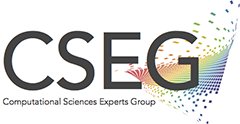The Detroit Auto show is always a great place to see new trends in design, but most attendees are focused on the outward style, design trends and concepts. At the most recent show, I walked the show with a Powertrain Engineer’s hat on. Below are my 3 key takeaways which are essentially variations on the theme of optimizing fuel-efficiency and vehicle performance.
Downsizing and turbocharging are the trends for 2014 and beyond.
Compared to prior years, there was a broader implementation of known technologies such as active grill shutter system, down-sizing and turbo-charging, start-stop technology. These technologies allow the OEM to increase fuel economy and improve performance through a ballet of the components and their interaction with each other. This year, the downsizing and turbocharging trend was especially noticeable in the luxury car segment with the new Mercedes 4 cylinder AMG engine (2L with 355hp) and Audi A3 (2L with 220 hp). With turbo-charging, OEMs can get around the previous size equals power paradigm and sometimes increase the power density above the 100hp per Liter rule of thumb. We are likely to see OEMs looking to take this as far as possible with little market penalty. The flag bearer for this trend in my mind is the Ford’s 1L 3 cylinder turbo-charged engine with 125hp for the Ford Fiesta. It’s a baby engine, but with all the bells and whistles of EcoBoost, packs the same power of its bigger 1.6L cousin.
Mild-hybridization expands into trucks!
Bob Lutz said at the last World Congress that mild-electrification of the entire portfolio (regular cars, sports cars and trucks) is very likely, and needed to meet 2025 CAFÉ standards. The latest F-150, a truck, was mild-hybridized with start-stop technology, giving start-stop another stamp of approval as the go-to technology for fuel-economy improvements, and proving Bob right. There was a downsizing-the-engine trend for the F-150 as well with the 2.7L EcoBoost V6 engine joining the 3.5L and 5L engines as the option. To the American consumers, this downsizing is a paradigm shift and OEMs will need to ensure that the power to size ratio stays balanced and that consumers accept the advances. Which brings us to the 3rd trend:
Expansion of advanced technologies being bundled and marketed under a brand.
OEMS are packaging and marketing a combination of powertrain advances under one umbrella such as EcoBoost, Skyactiv or GTDi. This is not new for the 2014 show but there was definitely a much wider prevalence of this. This branding will help OEMs explain the shrinking engine to the consumer and assure them that they can get the performance they want and still get good fuel economy. Most of these branded technologies are very similar and have downsizing-and-turbocharging, variable valve timing and direct injection as their core technologies. Two of the stand-out examples:
- Ford’s EcoBoost – Downsized, Turbo charged, Direct injection with variable valve timing
- Mazda’s Skyactiv- High compression ratio, direct injection, precise 6 speed transmission, ultra-high-tensile-steel strength and an option regenerative engine braking.
So all in all, downsizing, boosting, direct injection, VVT and mild-hybridization seem to be the common technologies that the OEMs are betting on for improving fuel economy, and the OEMs are in a sell mode as the adoption of these technologies seeps deeper into their offering. In the future, smaller engines with a lots of enabling technologies will be the norm with the same power that we are used to, which is great news for meeting CAFE standards. These powertrains just happen to be significantly more complex and require an active control to ensure optimal operation
